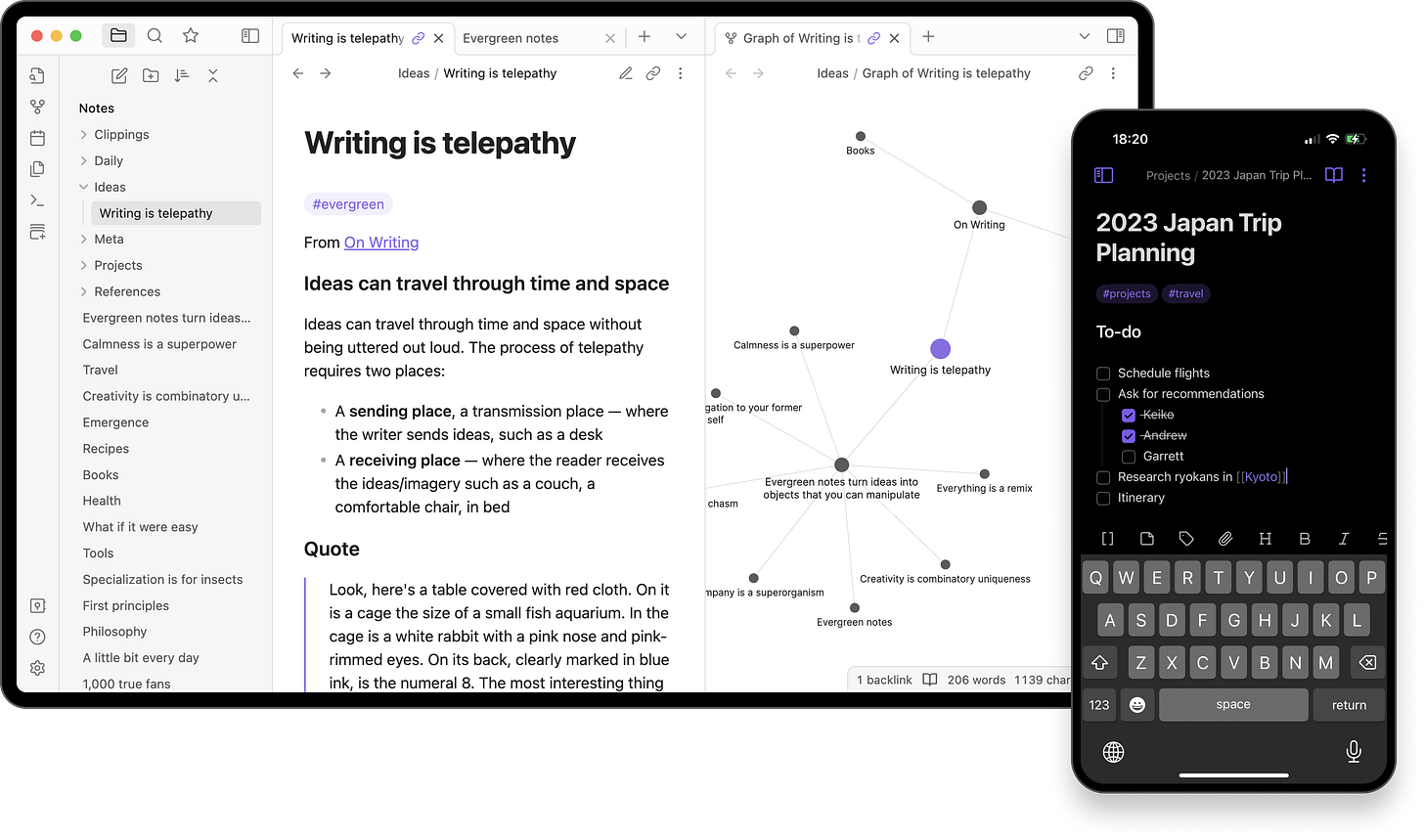Obsidian MD is a program dedicated to note-taking in the Markdown language. It hosts a wide range of plugins that make the writing process easier, no matter what type of writing you do. There’s also a convenient mobile app that natively syncs to iCloud, and for Android users you have a choice between a third party plugin or Obsidian’s paid syncing feature.
Before delving into the rest of the review, I’d like to say that I haven’t be subsidised for this review nor have I been paid to do it. This review contains my own thoughts and feelings towards the product.
First Impressions
It’s another code editor, how different could it be from programs such as Visual Studio Code and R Studio? I asked myself that question when I first heard about Obsidian MD, brushing it off as yet another editor that renders Markdown live but has little else to offer for writers. I don’t admit it often, but I was wrong. This is so much more than your average code editor, mostly because it was created with writers in mind!
The layout is minimal, but there are plenty of themes you can choose from that have been created by the Obsidian MD community, so you can go as minimalist or as bright as you’d like. The learning curse is relatively shallow, but if you’re new to Markdown or download plugins, you might have to keep the documentation open in a separate window.
One neat feature you’re met with when you first open a Vault, whether you’ve added files to it or not, is the graph view. This is an interactive graph that shows you your files as dots, with lines connecting them to the other files they’re mentioned or linked in. You can also play a timelapse animation which shows you what files came first and when they became connected to others. It’s not awfully helpful for me and I can’t personally see how the timelapse animation could be helpful to other writers, but it’s a cute feature and I use it anyway.
There’s something so satisfying about watching those little dots bounce around and connect to each other.
Digging Deeper
To save time, I’m only going to dig into Obsidian’s core plugins, because if I were to dig into the community plugins too I’d be here all day! So far I’ve toggled on 19 of the 27 core plugins that come built in, and out of the ones I haven’t toggled on I’d recommend you use the Format Converter before importing any pre-existing files into your vault. I didn’t do this and I had to copy-paste all my RMarkdown files as they wouldn’t show up in my Vault. It’s better safe than sorry!
The core plugin I use the most is the Properties plugin, which adds frontmatter to your Markdown file. Frontmatter is commonly used in blog posts and webpages, but in Obsidian it works similar to Scrivener — except it renders as you type it. I use it for tags to make for easy searching, and for aliases so I can link to my notes without having the full title show in the preview.
Improvements
Cloud integration! I prefer not to use third-party apps and I’m having to use them if I want to sync my Vault to the mobile app. This is because I use OneDrive, and the only Cloud that allows you to sync without a third-party app is iCloud. At first I thought this was because they wanted to push their own Cloud, but it’s most likely due to an API issue (since iCloud works). If fixing the API was possible, that would be a major improvement.
Conclusion
Obsidian MD combines your average code editor with a UI and features geared specifically towards writers. It’s free and allows you to organise your notes in many different ways, with an endless amount of plugins to fit your workflow. Despite multi-device integration (unless you’re using iCloud) not being possible right now, there are multiple workarounds (for OneDrive and Google Drive), and the mobile app version is just as seemless as the desktop program.
Rating Breakdown
Ease of Use: ★★★☆☆
Features: ★★★★★
Customer Support/Communication: ★★★☆☆
Price: ★★★★★







